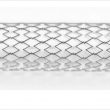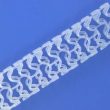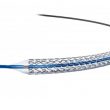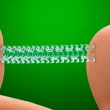Most literature, old and recent, associates carotid artery stenting with a higher rate of stroke (although minor) when compared with carotid endarterectomy during the acute period. However, 30-day outcomes of angioplasty and surgery are comparable. Many technical advancements, including new stent designs and different cerebral protection mechanisms, have improved the outcomes of angioplasty in clinical<a href="https://solaci.org/en/2017/11/10/efficacy-of-micromesh-covered-stents-in-carotid-artery-stenting/" title="Read more" >...</a>
SYNTAX II: Better Stents, IVUS, FFR, or a Combination of All of Them to Catch Up with Surgery
In patients with 3-vessel disease, surgery obtained better outcomes than angioplasty, according to results from the SYNTAX and FREEDOM trials, which used first-generation drug-eluting stents. Even in the BEST trial, which used new-generation stents, surgery still offered far better outcomes. Nobody is surprised by the fact that, whenever angioplasty evolves due to a new device<a href="https://solaci.org/en/2017/09/13/syntax-ii-better-stents-ivus-ffr-or-a-combination-of-all-of-them-to-catch-up-with-surgery/" title="Read more" >...</a>
Self-Expanding Stents Are Superior to Balloon-Expandable Stents in the Iliac Arteries
Courtesy of Dr. Carlos Fava. Severe atherosclerotic disease in iliac arteries is experienced by 15% of all men and 5% of all women. TAC II recommends angioplasty for type-A, -B, and -C lesions. As regards stent type, self-expanding stent (SE, more elasticity) vs. balloon-expandable stent (SB, more radial strength), Reekers indicates superior target lesion revascularization (TLR) with SE. However, there<a href="https://solaci.org/en/2017/09/05/self-expanding-stents-are-superior-to-balloon-expandable-stents-in-the-iliac-arteries/" title="Read more" >...</a>
Are Bioresorbable-Polymer Stents More Thrombogenic than Durable-Polymer Second-Generation Stents?
Courtesy of Dr. Cristian Jesús Rodríguez. Most stents currently used in percutaneous coronary intervention (PCI) are durable-polymer second-generation drug-eluting stents (DP-DES, with everolimus or zotarolimus). However, it has been argued that the persistence of such a polymer after complete drug elution is one of the main factors for a dangerous complication: stent thrombosis (ST). After<a href="https://solaci.org/en/2017/08/23/are-bioresorbable-polymer-stents-more-thrombogenic-than-durable-polymer-second-generation-stents/" title="Read more" >...</a>
Biodegradable-polymer stents are as safe as permanent-polymer stents in a 5-year follow-up
Courtesy of Dr. Carlos Fava. One of the questions around drug-eluting stents (DES) is whether the development of biodegradable polymers would derive in better outcomes than the performance of durable polymers as regards the presence of events. In consequence, the COMPARE II trial was carried out with the aim of testing them in “real-world” patients. This<a href="https://solaci.org/en/2017/06/13/biodegradable-polymer-stents-are-as-safe-as-permanent-polymer-stents-in-a-5-year-follow-up/" title="Read more" >...</a>
Promising Outcomes of Overlapping Stents in Patients Undergoing Bioresorbable Scaffold (BRS) Implantation
Courtesy of Dr. Guillermo Migliaro. In regular clinical practice, overlapping stents are reported in up to 30% of patients undergoing coronary angioplasty, especially due to very long lesions requiring implantation of multiple stents or dissection after the implantation of a first stent. In bare metal stent era, overlapping was associated with unfavorable clinical outcomes<a href="https://solaci.org/en/2017/05/08/promising-outcomes-of-overlapping-stents-in-patients-undergoing-bioresorbable-scaffold-brs-implantation/" title="Read more" >...</a>
Bioresorbable scaffolds with drug-eluting stents: do they entail a higher thrombosis risk?
Courtesy of Dr. Leiva. Bioresorbable scaffolds with drug-eluting stents (bioresorbable vascular scaffolds, BVS) have been added to the list of endovascular treatment options for coronary disease. The ABSORB III trial showed the non-inferiority of this stent type to everolimus-eluting metallic stents as regards target-lesion revascularization (TLR) at one year. However, reports have suggested a higher<a href="https://solaci.org/en/2017/04/21/bioresorbable-scaffolds-with-drug-eluting-stents-do-they-entail-a-higher-thrombosis-risk/" title="Read more" >...</a>
Biolimus and Everolimus Eluting Stents in Coronary Artery Disease: Similar Safety?
Courtesy of Dr. Guillermo Migliaro. Events such as very late stent thrombosis and restenosis after first generation DES stenting were associated to the inflammatory response of site implantation. The presence of a durable or permanent polymer was thought to play a central role in said inflammatory process, which caused, among other things, delayed re-endothelialization and<a href="https://solaci.org/en/2017/04/01/biolimus-and-everolimus-eluting-stents-in-coronary-artery-disease-similar-safety/" title="Read more" >...</a>
Very Late Thrombosis: Bioresorbable Scaffolds vs. Everolimus-Eluting Metallic Drug-Eluting Stents
This study sought to compare the 2-year outcomes between bioresorbable vascular scaffolds (BVS) and everolimus-eluting metallic drug-eluting stents (EES), since the occurrence of very late thrombosis (thrombosis beyond 1 year after implantation) is an increasing concern in relation to new devices. This meta-analysis was conducted based on 24 studies (BVS: n = 2567 and EES: n = 19,806) reporting the<a href="https://solaci.org/en/2017/01/24/very-late-thrombosis-bioresorbable-scaffolds-vs-everolimus-eluting-metallic-drug-eluting-stents/" title="Read more" >...</a>
Edge Restenosis with Everolimus Eluting Stents: a few Predictors
Stent edge restenosis continues to be a weakness of drug eluting stents (DES). The aim of this study was to determine its predictors using optical coherence tomography (OCT). The study retrospectively analyzed 319 patients receiving OCT immediately after everolimus eluting stent implantation (EES) looking into the immediate outcome, and follow up angiography at 9<a href="https://solaci.org/en/2017/01/04/edge-restenosis-with-everolimus-eluting-stents-a-few-predictors/" title="Read more" >...</a>









